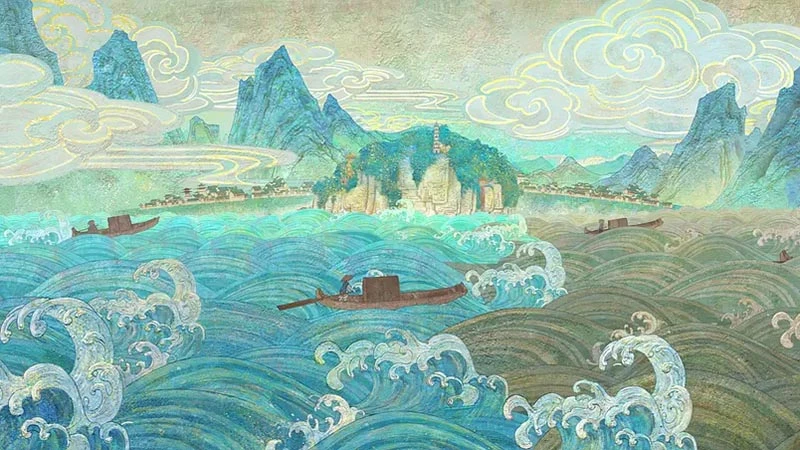A Bold New Frontier in Animation and Ecology
As the first domestic animated film to tackle the theme of the Yangtze River’s unique ecosystem, The Dance With the Finless Promise (江豚·风时舞) boldly ventures into a relatively untouched genre. Its main character, the Yangtze River dolphin, shines a light on China’s endangered aquatic wildlife and broader environmental concerns. Despite the technical and storytelling challenges of portraying aquatic life, this film attempts to immerse viewers in an underrepresented realm of nature that is both visually complex and emotionally delicate.
While animal-themed films have long enchanted audiences worldwide, they mostly center on terrestrial animals. Films about underwater creatures remain rare, often limited by technical constraints, the challenge of capturing aquatic behavior, and viewers' limited emotional connection to marine animals. These factors set The Dance With the Finless Promise apart, as it ambitiously combines an artistic portrayal of an endangered species with the practical goals of raising awareness about ecological preservation.

Creating a realistic underwater world poses significant technical challenges. Underwater scenes demand specialized equipment and expertise, such as high-quality underwater cameras, lighting adjustments for variable water conditions, and the need to replicate water’s movement realistically. The high production costs and complex requirements for realism make it rare to see animated films based on water environments. Beyond this, accurately capturing the fluidity of water and aquatic life behavior in 3D animation is another hurdle. Portraying animals like the Yangtze River dolphin in motion demands that animators pay careful attention to water resistance, buoyancy, and the creature’s unique physical traits, such as finless bodies and shovel-shaped teeth.
Despite the difficulties, The Dance With the Finless Promise brings the Yangtze’s ecosystem to life in impressive detail. The animators have captured the dolphin's unique anatomy and behaviors, like their curiosity and playfulness, while also showcasing rare aquatic species like the Chinese sturgeon and the Chinese paddlefish. By highlighting these lesser-known animals, the film draws attention to the vulnerability of China’s aquatic biodiversity, framing the Yangtze River not just as a waterway but as a fragile habitat in need of protection.
Blending Art, Myth, and Environmentalism
In attempting to connect viewers with the plight of the river dolphin, The Dance With the Finless Promise weaves together fantasy, Chinese mythology, and elements of romance. However, the narrative occasionally falters, unable to achieve the seamless blend of myth and environmental advocacy that might resonate more deeply with audiences. The storyline, which follows a mystical river dolphin character, "Jiang Ling," alongside human protagonists, has moments of disconnect where plot progression and character development feel forced or unnatural.
This challenge underscores a broader issue in contemporary ecological films—balancing educational content with engaging storytelling. For the audience to empathize with aquatic animals, the narrative must evoke a sense of wonder while also grounding the story in meaningful themes. Yet, as with many eco-conscious films, The Dance With the Finless Promise struggles with integrating its educational mission without hindering the emotional depth of its characters or the cohesion of its plot. The result is a mixed experience: the film successfully brings attention to endangered species and ecological issues, but it occasionally stumbles in its mission to merge art with advocacy.
Ultimately, The Dance With the Finless Promise raises a significant question: can environmental storytelling that centers on aquatic life resonate as profoundly as stories about land animals? The answer, as shown by this film’s attempt, is both yes and no. While the visual depiction of endangered river species effectively educates, a more refined narrative approach could better sustain emotional engagement.



